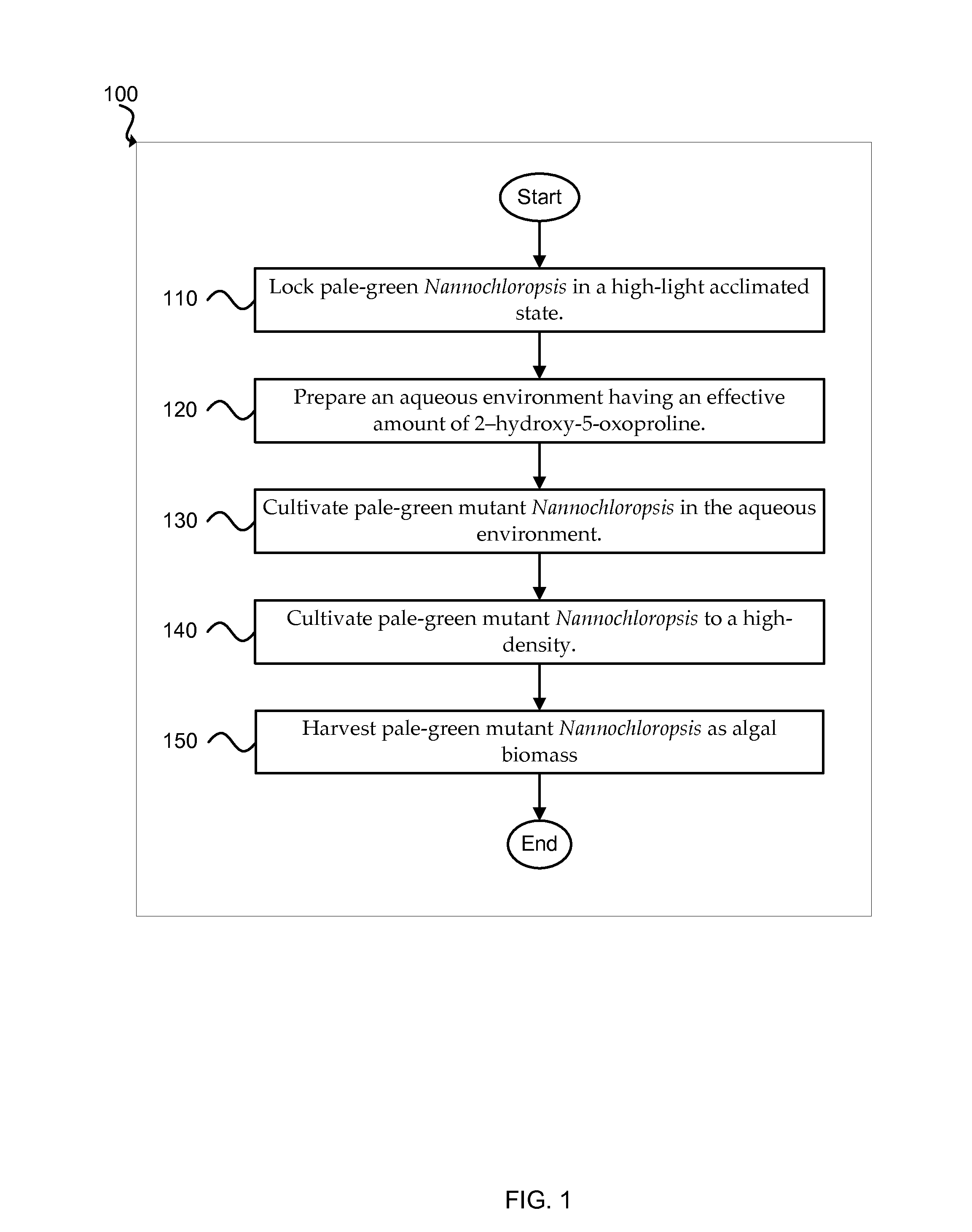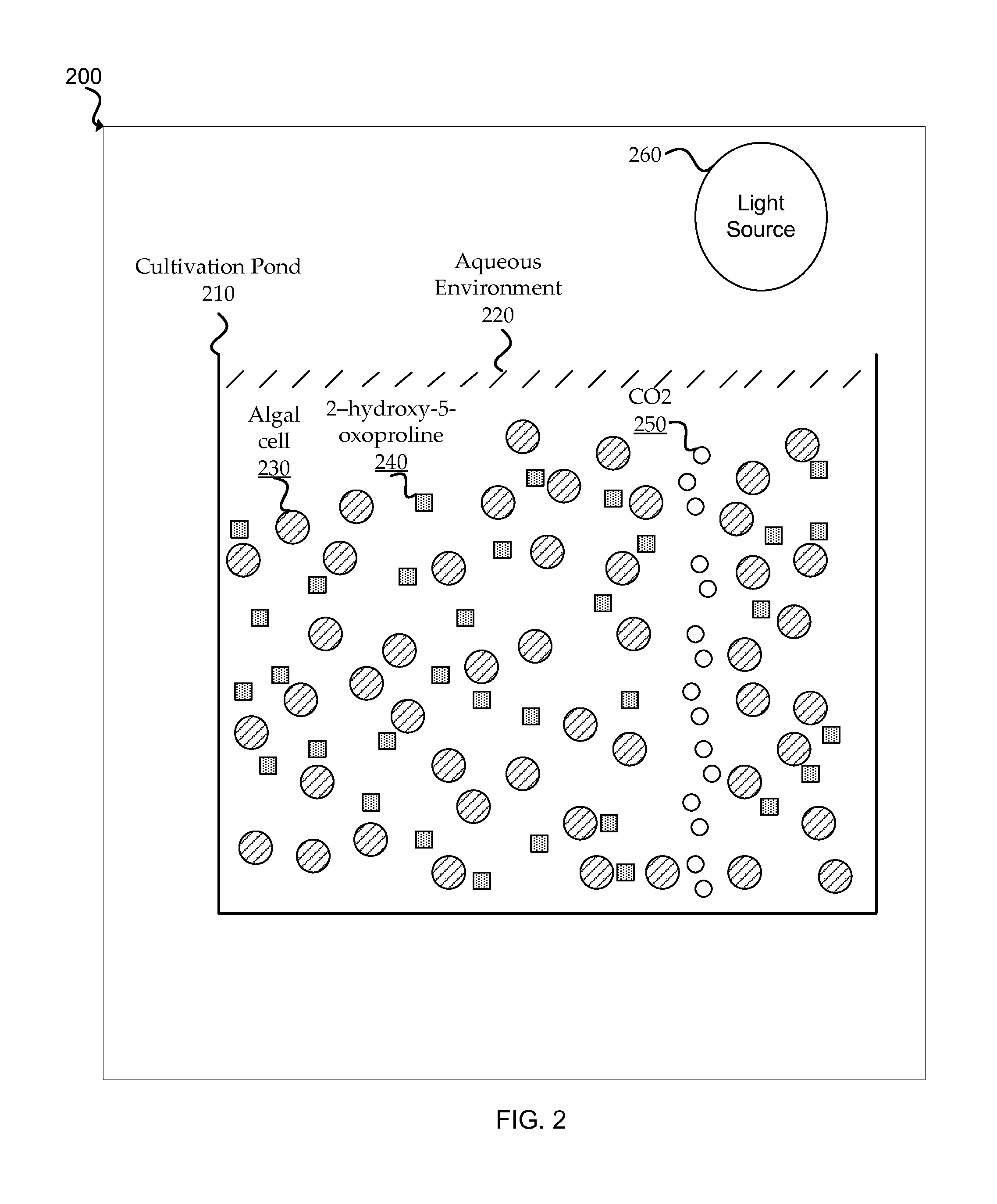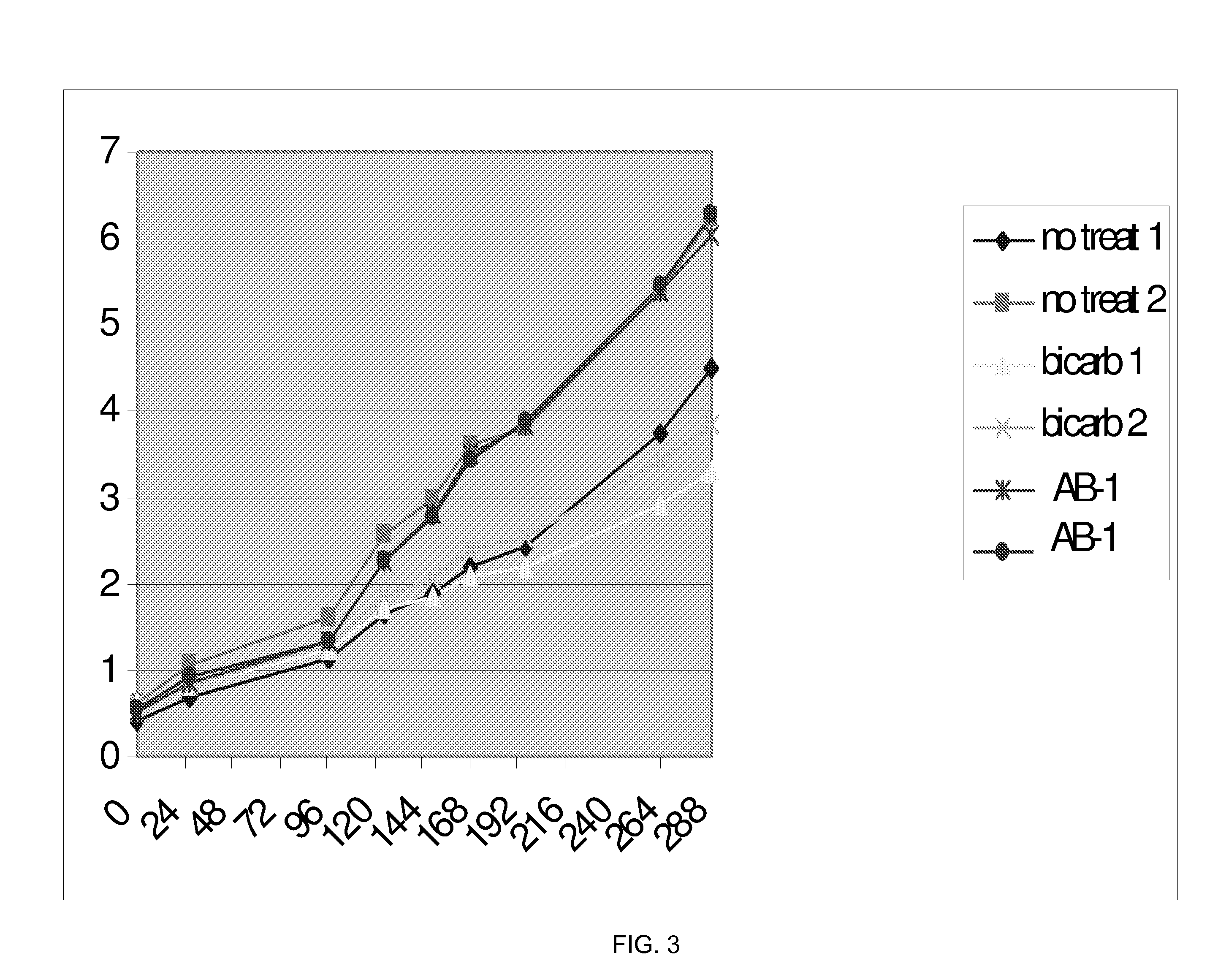Use of 2-hydroxy-5-oxoproline in conjunction with algae
a technology of algae and oxoproline, which is applied in the specific use of bioreactors/fermenters, microorganisms, and after-treatment of biomass, etc., can solve the problems of formidable challenges in large-scale cultivation of organisms in open ponds for fuel feedstock production, and achieve the effect of reducing an amount of chlorophyll and accelerating the creation of algae with high cell density
- Summary
- Abstract
- Description
- Claims
- Application Information
AI Technical Summary
Problems solved by technology
Method used
Image
Examples
example one
[0031]1. Light intensity was 600 micro-Einsteins.
[0032]2. Temperature was held constant at 25 C.
[0033]3. Cultures were inoculated to the same extent (as determined by optical density at 700 nm, O.D. 750).
[0034]4. The bicarb controls were used because the AB1 chemical, which is the 2-hydroxy-5-oxoproline compound, was dissolved in a bicarbonate buffer. This control was to make sure that differences in growth were not due to the presence of bicarbonate. The bicarb controls contain the same concentration of bicarbonate as the AB1 flasks.
[0035]5. The cultures were grown on urea as the nitrogen-source.
[0036]As shown in FIG. 3, no treat 1, bicarb 1 and bicarb 2 represent controls whereby the same number of cells as in AB-1 were inoculated into 800 mls of algae-growth media and allowed to grow, without dilution, for approximately 300 hours under constant illumination. The bicarb controls were inoculated with 10 mls of 1.3 M bicarbonate solution (pH 9.5). The AB-1 treated cultures had appro...
example two (
PROPHETIC)
[0037]A Nannochloropsis cultivar is mutagenized by exposure to ultraviolet radiation of an intensity and duration sufficient to kill less than 100% of the cells. The surviving cells are plated on agar media, with a cell density low enough to enable visual screening of colonies by color. Pale green colonies are selected and isolated. The isolated pale green mutants are cultivated in growth conditions similar to those found in open pond cultivation, to identify one that has enhanced growth characteristics at high cell density. This strain (the pale green mutant) is then inoculated in the presence of 2-hydroxy-5-oxoproline at a concentration of 0.1 grams per liter of culture medium. The pale green mutant Nannochloropsis reaches a high cell density in a relatively short period of time in the presence of the 2-hydroxy-5-oxoproline.
example three (
PROPHETIC)
[0038]A wild-type Nannochloropsis cultivar is plated on agar media. The wild-type Nannochloropsis cultivar is cultivated in growth conditions similar to those found in open pond cultivation. The wild-type Nannochloropsis cultivar is then inoculated in the presence of 2-hydroxy-5-oxoproline at a concentration of approximately 0.1 grams per liter of culture medium. The treated wild-type Nannochloropsis cultivar reaches a high cell density faster than an untreated wild-type Nannochloropsis cultivar.
PUM
| Property | Measurement | Unit |
|---|---|---|
| size | aaaaa | aaaaa |
| volume | aaaaa | aaaaa |
| concentration | aaaaa | aaaaa |
Abstract
Description
Claims
Application Information
 Login to View More
Login to View More - R&D
- Intellectual Property
- Life Sciences
- Materials
- Tech Scout
- Unparalleled Data Quality
- Higher Quality Content
- 60% Fewer Hallucinations
Browse by: Latest US Patents, China's latest patents, Technical Efficacy Thesaurus, Application Domain, Technology Topic, Popular Technical Reports.
© 2025 PatSnap. All rights reserved.Legal|Privacy policy|Modern Slavery Act Transparency Statement|Sitemap|About US| Contact US: help@patsnap.com



